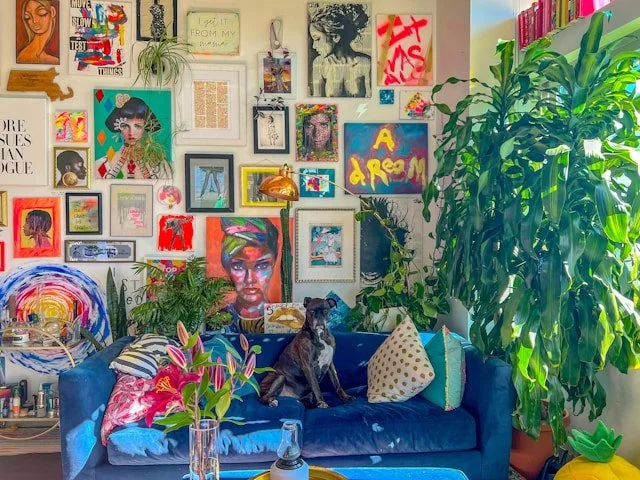Minimalism vs. Maximalism: Finding Your Design Style
I recently came across a video titled ‘The RISE of Maximalism’ by Future Proof and in it’s thumbnail ‘MINIMALISM IS DEAD’. Rather clickbait-y but the content is compelling. In short, Levi argued that both these trends has came and went over the decades with minimalism being its most popular around the 2010s. As a society we are experiencing the peak of consumerism where we are able to buy things at affordable prices that fill our lives (and houses) with things we don’t necessarily ‘need’ - maximalism. We’re not in the business of philosophy but we are in the business of advising clients that both of these styles can work brilliantly for their homes.
In the world of interior design, two contrasting styles have emerged as prominent contenders: minimalism and maximalism. While minimalism advocates for simplicity and pared-down aesthetics, maximalism embraces boldness and abundance.
Understanding Minimalism:
Minimalist design is characterized by simplicity, clean lines, and a focus on essential elements. It emphasizes functionality and decluttering, often utilizing neutral color palettes to create a sense of calm and tranquility. Minimalist interiors prioritize quality over quantity, promoting efficient use of space while minimizing visual distractions. This design philosophy encourages a mindful approach to living, with an emphasis on intentional choices and thoughtful curation of furnishings and decor. Explore reputable The Spruce's "What Is Minimalism?” for a deeper understanding of this design style.
Pros and Cons of Minimalism:
Pros:
Creates a sense of calm and tranquility.
Emphasizes quality over quantity.
Promotes efficient use of space.
Cons:
May feel cold or impersonal to some.
Requires strict discipline to maintain clutter-free spaces.
Limited opportunities for self-expression.
Embracing Maximalism:
Maximalism, on the other hand, celebrates vibrancy, eclecticism, and a "more is more" mentality. Maximalist interiors are characterized by their bold colors, patterns, textures, and eclectic mix of furnishings. Explore Elle Decor's "What Is Maximalism? Everything You Need to Know About the Style" to delve deeper into this eclectic design approach.
Photo by Steph Wilson on Unsplash
Pros and Cons of Maximalism:
Pros:
Allows for creative self-expression and individuality.
Creates visually stimulating and dynamic spaces.
Embraces the beauty of collections and personal treasures.
Cons:
Can feel overwhelming or cluttered to some.
Requires a careful balance to avoid visual chaos.
May require more time and effort to curate cohesive designs.
How to Decide Which is for You
Ultimately, choosing between minimalism and maximalism comes down to personal preference, lifestyle, and the desired atmosphere for your space. Consider factors such as your tolerance for clutter, your aesthetic preferences, and the functionality you require from your living environment. I however believe that there is a minimalist and a maximalist in all of us and once we go through the pros and cons listed above, it makes the revelation much clearer to us.
Whether you gravitate towards the simplicity of minimalism or the boldness of maximalism, both design styles offer unique opportunities for self-expression and creativity. By understanding the pros and cons of each approach and considering your own preferences and lifestyle, you can create a space that reflects your personality and enhances your daily life. Either way, talk to us and we’ll help bring your vision to life.


